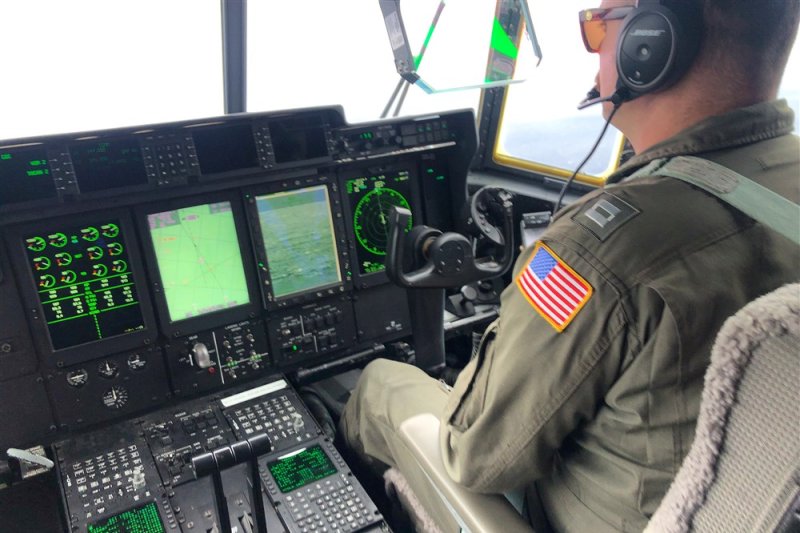A U.S. Coast Guard crew member aboard an HC-130 Hercules airplane searches for the 21-foot Titan submersible approximately 900 miles East of Cape Cod in Boston in June, 2023. The Titan was carrying tourists to the site of the Titanic wreckage. File Photo by U.S. Coast Guard Petty Officer 1st Class Amber Howie/EPA-EFE
Sept. 19 (UPI) — The scientific director of OceanGate testified Thursday that the private company’s sub Titan malfunctioned days before the failed mission in 2023 that ended in an implosion, claiming the lives of five crew and passengers on a trip to the sunken Titanic.
OceanGate scientific director Steven Ross told a U.S. Coast Guard panel investigating the deadly incident that the Titan submersible capsule had a platform malfunction only days before it descended into the North Atlantic on what turned out to be its final mission.
He testified that the platform malfunction incident rocked the submersible during the dive prior to the deadly one, and the incident caused Titan’s occupants to “tumble about.” OceanGate co-founder Stockton Rush crashed into bulkhead, Ross said during his testimony to the investigative panel Thursday.
“One passenger was hanging upside down,” said Ross. “The other two managed to wedge themselves into the bow end cap.”
He did not know if the hull of the Titan was evaluated after that incident, he added.
Ross’ testimony followed that of OceanGate operation director David Lochridge, who delivered his own blistering assessment of the business climate at the company, and of what he said was Rush’s penchant for playing fast and loose with the rules.
Lochridge told the panel Tuesday that the company’s goal was to turn a profit, that OceanGate ignored obvious safety issues, and that “very little” science was involved in carrying out the sub’s dives.
That testimony was countered by Renata Rojas, a mission specialist with ties to OceanGate dating back several years. Rojas took on that role after completing several dive missions with Rush and Lochridge. Rojas left her career as a banker to take on the job, inspired by her sense of underwater exploration.
She said everyone who worked at the company was driven by a similar sense of curiosity and adventure.
“I was learning a lot and working with amazing people,” Rojas testified. “Some of those people are very hardworking individuals that were just trying to make dreams come true.”
Rojas did acknowledge during her testimony that she was aware that the submersible craft had not been inspected by the Coast Guard and that it was not built according to industry standards, but that OceanGate officials were open about their company and told prospective employees that the Titan was “experimental and not classified.” She said she had always felt safe on the craft and even had visited the site of the sunken Titanic on a previous dive.
“I found them to be very transparent about everything,” she continued. “Anybody could ask any questions, and if you asked questions, like ‘I want to see the monitoring systems for this dive,’ it’s like, ‘Come on. I’ll show it to you.'”
The Coast Guard said earlier this week that the Titan crew sent a message during the fateful dive that “all is well” prior to the deadly implosion. It turned out to be the final communication from the Titan before the implosion that killed all 5 crew and passengers and left remnants of the craft scattered on the floor of the North Atlantic.
Before it became clear that the sub was lost, rescue crews and recovery experts from all over the world, including the U.S. Navy, launched a massive rescue effort to try to save the vessel and its crew.
